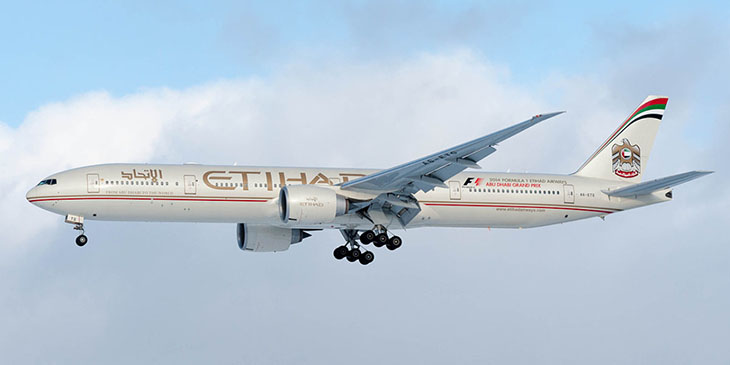Etihad B777 fire in cargo hold blamed on manufacturing defect

An Etihad Boeing 777-300, registration A6-ETR performing flight EY-450 from Abu Dhabi, United Arab Emirates to Sydney, Australia was diverted to Adelaide, Australia on October 14, 2017, after the flight crew received a cargo smoke alert. In its final report published on August 22, 2018, the Australian Transport Safety Bureau points at an incorrect positioning of the wiring during assembly that led to wire chafing and arcing.
Flight crew first noticed a burning smell coming from an air vent. When they received a forward cargo fire signal, the pilots activated the pilots armed the fire system that discharged two extinguishers. After sending a MAYDAY to air traffic control, the plane was allowed to divert to Adelaide where it landed. Upon inspection by the emergency services using a thermal camera, no live fire was found. The 349 people on board evacuated the aircraft normally, using stairs down to the taxiway.
A preliminary inspection revealed soot and fire damage in the cargo hold ceiling. After the plane returned to the United Arab Emirates for a closer inspection, Etihad engineers determined that the damage was caused by a wire that was chaffed after it came into contact with screws used to seal the cargo ceiling panel, leading to an electric arc. This conclusion was confirmed by Boeing engineers. It was eventually found that “the wiring loom W5279 was likely to have been incorrectly positioned during the aircraft build in 2013.”
“In response to this, and four other incidents, the aircraft manufacturer utilized their system of communication to alert all operators of the issue and took actions in an effort to prevent reoccurrence,” states the report. Boeing indeed notified every operators and issued Service Bulletin 777-24-0157 that provides instructions on correcting the defect. The manufacturer will also take the defect into consideration when designing new aircraft. The investigators praised the design of the aircraft and the crew actions in minimizing the effect of a “serious incident”.
source: Aero Time





